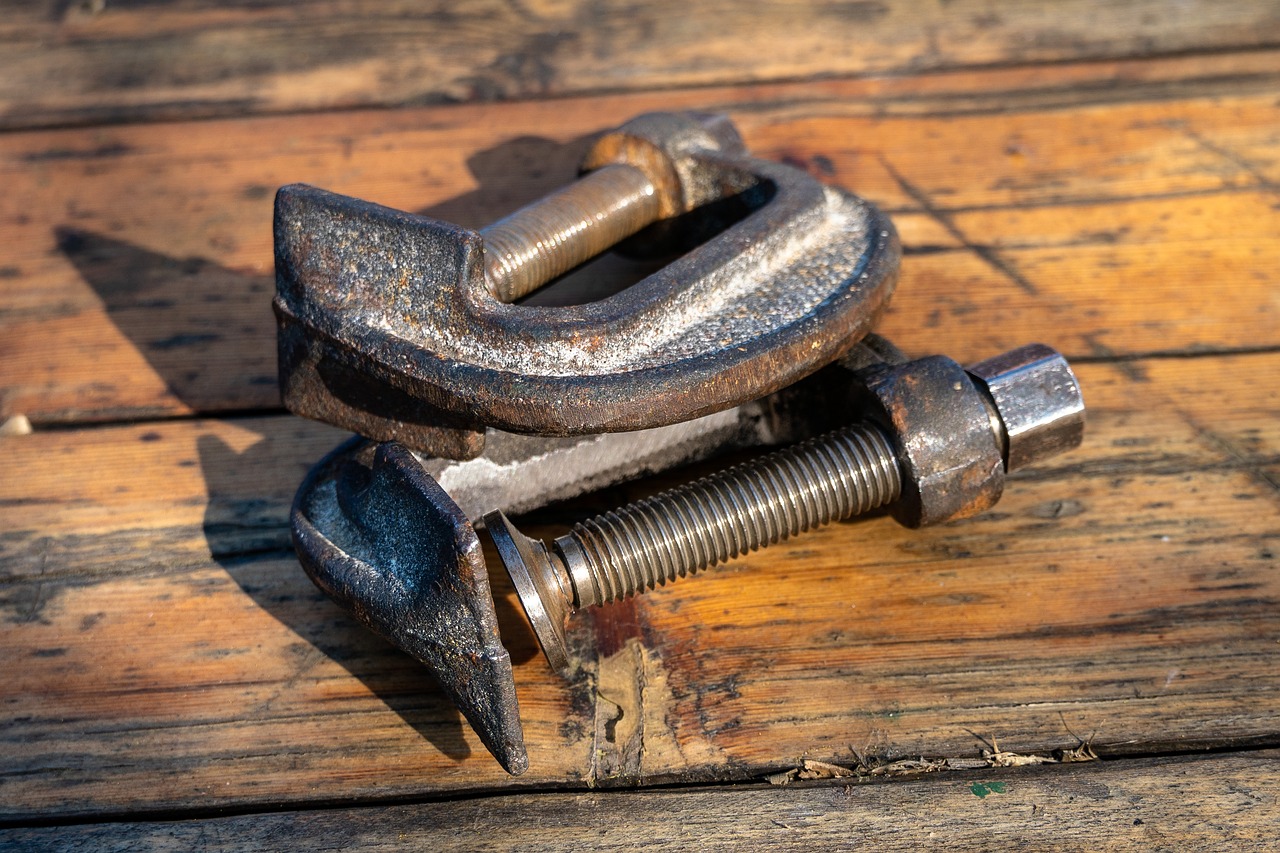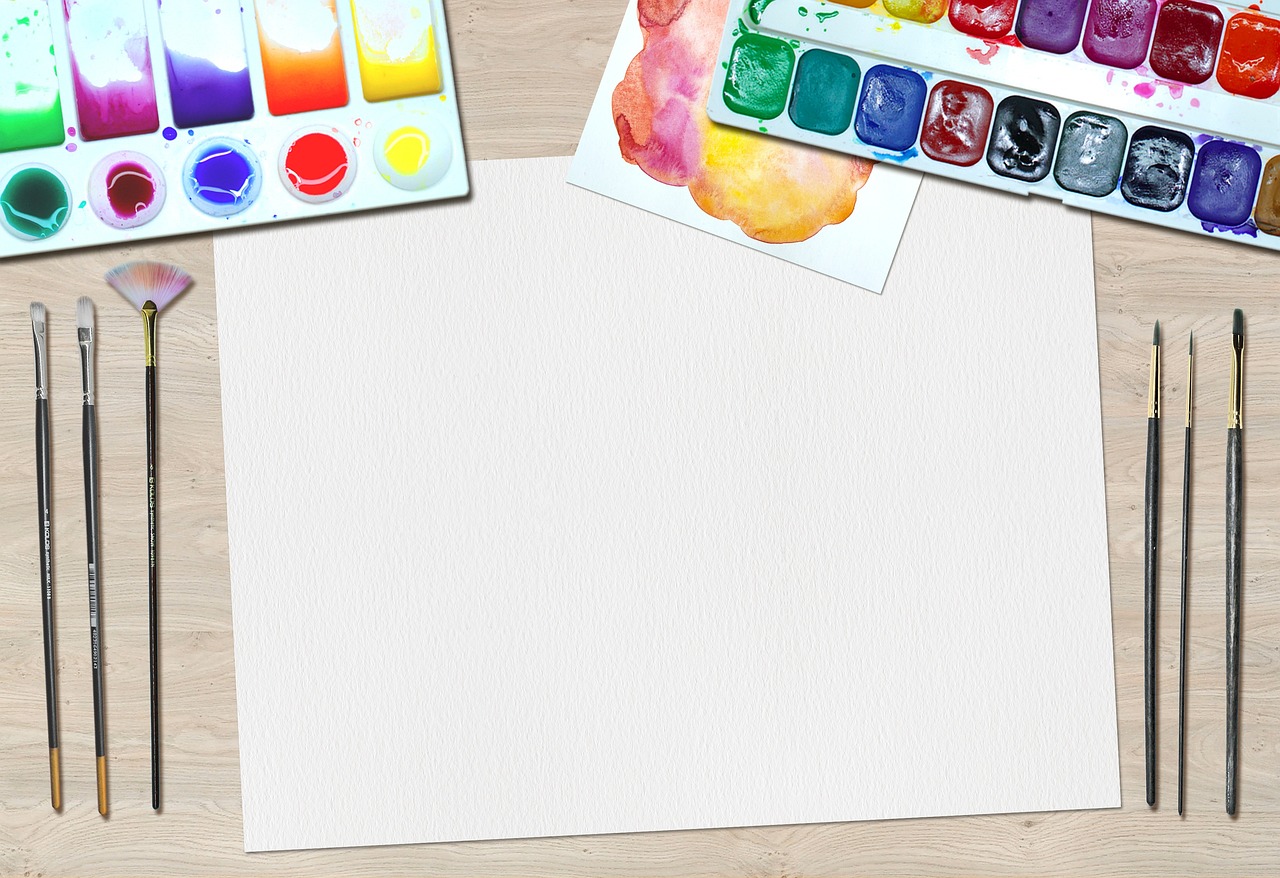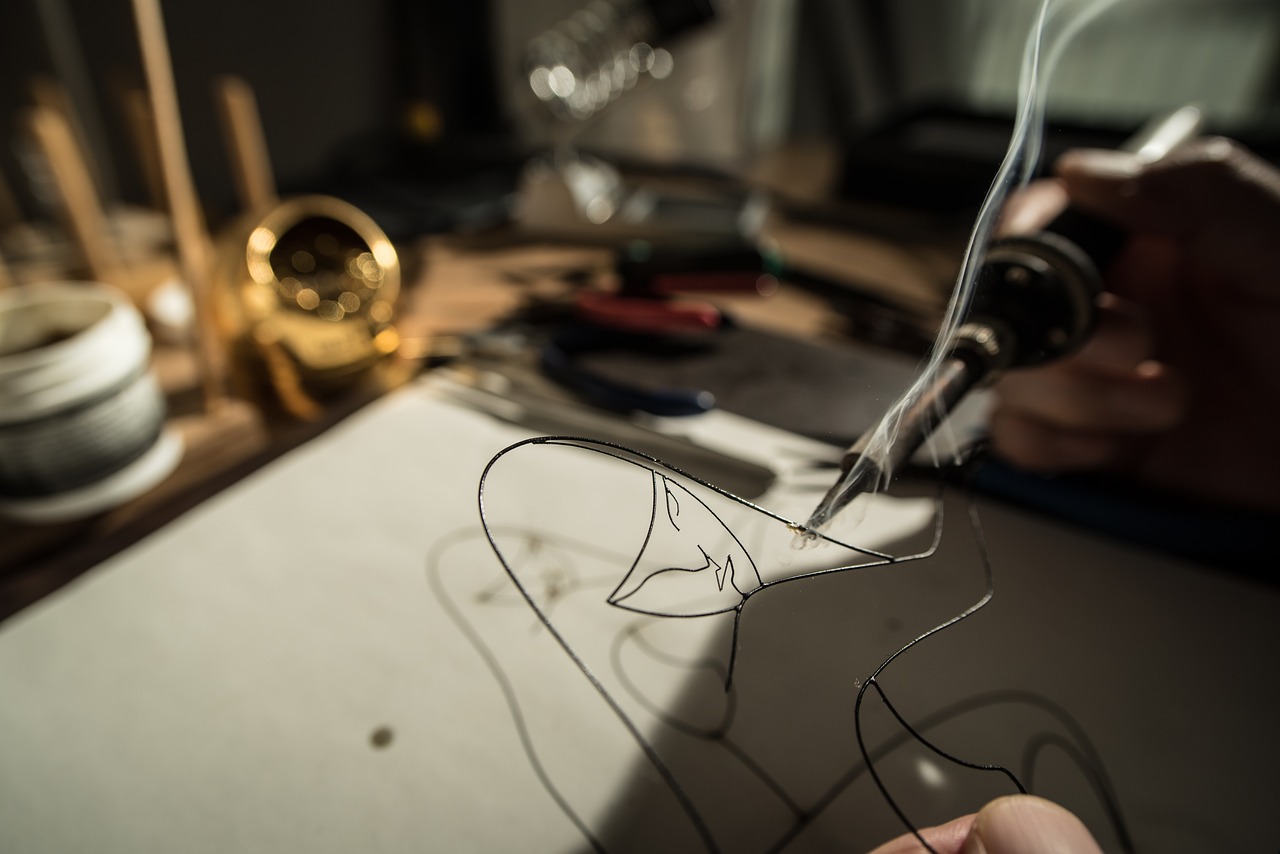From Discarded Blinds to Useful Hangers
Have you ever looked at those old, dusty blinds hanging in your window and thought, "What on earth can I do with these?" Well, you're not alone! Many of us have blinds that have seen better days, but instead of tossing them in the trash, why not transform them into something useful? In this article, we’ll explore the innovative journey of turning discarded blinds into practical hangers. This isn't just about recycling; it's about unleashing your creativity and embracing sustainability in your everyday life. Imagine the satisfaction of creating something functional from materials that would otherwise end up in a landfill. Sounds intriguing, right? Let’s dive into the world of repurposing and discover how you can add a personal touch to your home while doing your part for the planet.
Before we roll up our sleeves and get crafty, it's crucial to understand what we're working with. Blinds are typically made from a variety of materials, including vinyl, wood, and aluminum. Each of these materials has unique properties that can influence how we repurpose them into hangers. For instance, vinyl is lightweight and easy to cut, making it perfect for smaller hangers, while wood provides durability and a rustic charm. On the other hand, aluminum offers a sleek, modern look but can be a bit tricky to work with due to its sturdiness. Knowing the characteristics of these materials can help you choose the right approach for your project and ensure that your new hangers are both functional and stylish.
Now that we have a grasp on the materials, let’s talk about the tools you’ll need to transform those blinds into hangers. Having the right tools on hand can make the crafting process smoother and more enjoyable. Here’s a quick rundown of the essentials:
- Measuring Tape: For precise measurements.
- Utility Knife or Scissors: Depending on the material, you'll need a sharp tool for cutting.
- Drill: To create holes for hooks or other attachments.
- Sandpaper: For smoothing rough edges, especially on wood.
- Paint or Stain: To finish your hangers and match your home decor.
Remember, safety comes first! Always wear protective gear, like gloves and goggles, to keep yourself safe during the crafting process.
Accurate measurements are the backbone of any successful DIY project, and this one is no exception. When it comes to creating hangers from blinds, you want to ensure that each piece is cut to the right size. A good tip is to measure twice and cut once—this old adage can save you from making mistakes! Use your measuring tape to determine the desired length for your hangers, and mark it clearly with a pencil. Depending on the material, you can use either a utility knife for vinyl or scissors for lighter materials. For wood, a saw may be required. The goal is to make clean, straight cuts so that your hangers look professional and polished.
While cutting materials, safety should always come first. Here are some necessary precautions to consider:
- Always wear protective gear, such as gloves and goggles.
- Ensure your workspace is well-lit and organized to avoid accidents.
- Keep your tools sharp; dull tools can slip and cause injuries.
By following these precautions, you can enjoy the crafting process without worry!
Not all blades are created equal, especially when it comes to cutting through different materials. For vinyl blinds, a sharp utility knife is your best bet, as it can slice through the material cleanly. If you're working with wood, a fine-tooth saw will give you the precision you need for smooth edges. Aluminum, while sturdy, can be cut with a hacksaw or a specialized metal cutting blade. Choosing the right blade not only makes your job easier but also ensures a clean finish, leaving your hangers looking as good as new.
Once you've got your materials prepared and your tools ready, it's time to unleash your creativity! The beauty of repurposing blinds into hangers is that you can personalize them to complement your home decor. Think about the style you want to achieve—do you prefer a minimalist look, or are you drawn to bohemian vibes? You can paint the hangers in vibrant colors, add decorative elements like ribbons or beads, or even use stencils to create unique patterns. The possibilities are endless! The only limit is your imagination, so let it run wild!
Ready to get started on your project? Here’s a simple step-by-step guide to help you turn those old blinds into fabulous hangers:
- Gather your materials and tools.
- Measure and mark the desired length for your hangers.
- Cut the blinds to size using the appropriate tools.
- Smooth any rough edges with sandpaper.
- Decorate your hangers as desired.
- Attach hooks or other hardware for functionality.
After constructing your hangers, it’s time for the finishing touches! This is where you can really let your personality shine. Consider painting your hangers to match your room, or applying a clear sealant to protect the finish. You can also add embellishments like decorative knobs or fabric accents to make them truly unique. These small details can elevate your hangers from simple repurposed items to stunning pieces of art.
So, what can you do with your newly created hangers? The options are vast! You can use them to:
- Organize clothing in your closet.
- Display art or photographs in a creative way.
- Hang accessories like scarves and belts.
- Create a unique wall display for your favorite items.
Each hanger can serve a multitude of purposes, making them not just functional but also a fun addition to your home decor.
Repurposing blinds into hangers not only reduces waste but also promotes creativity and sustainability. By engaging in such eco-friendly projects, you’re not just giving new life to old materials; you’re also making a statement about your values. It’s a win-win situation! Not only do you get to enjoy the satisfaction of crafting something unique, but you also contribute to a healthier planet by reducing landfill waste. Plus, think of the money you save by creating your own hangers instead of buying new ones! It’s a fantastic way to express your creativity while being kind to Mother Earth.
Q: Can I use any type of blinds for this project?
A: Yes! You can use vinyl, wood, or aluminum blinds. Just keep in mind that each material may require different tools and techniques.
Q: Do I need special tools to cut the blinds?
A: While basic tools like scissors or a utility knife work for most materials, using a saw for wood or a hacksaw for aluminum will give you the best results.
Q: How can I decorate my hangers?
A: You can paint them, add fabric, use stencils, or attach decorative elements like beads or ribbons to personalize your hangers.
Q: Are these hangers durable?
A: Yes, especially if you choose sturdy materials and finish them properly. With the right care, your repurposed hangers can last a long time!

Understanding the Materials
Before diving into the exciting world of transforming old blinds into practical hangers, it's crucial to understand the materials that make up these window treatments. Blinds are typically constructed from a variety of materials, each with its own unique properties. Knowing these can significantly influence how effectively you can repurpose them into something functional and stylish.
Most commonly, blinds are made from materials such as vinyl, aluminum, wood, and fabric. Each material has its advantages and disadvantages, which can affect your crafting experience:
| Material | Properties | Best Uses |
|---|---|---|
| Vinyl | Durable, lightweight, and water-resistant | Great for indoor and outdoor hangers |
| Aluminum | Sturdy, rust-resistant, and easy to cut | Ideal for modern, minimalist designs |
| Wood | Natural look, sturdy, and customizable | Perfect for rustic or vintage-style hangers |
| Fabric | Soft, flexible, and available in various patterns | Excellent for creative, colorful hangers |
Understanding these materials not only helps you make informed choices during your crafting process but also allows you to envision the potential of your creations. For instance, if you’re aiming for a rustic aesthetic, wooden blinds might be your best bet. On the other hand, if you prefer something durable and water-resistant for outdoor use, vinyl is the way to go.
Moreover, consider the thickness and flexibility of the materials. Thicker materials like wood and aluminum will provide sturdier hangers, while thinner materials like fabric can offer a more delicate look but may require additional support. This balance between aesthetics and functionality is key to creating hangers that not only look good but also serve their purpose effectively.
In summary, taking the time to understand the materials used in your old blinds can significantly enhance your crafting experience. Whether you choose vinyl, aluminum, wood, or fabric, each material brings something unique to the table, allowing for endless creativity and personalization in your hanger designs.

Tools Required for Transformation
When it comes to turning those old, discarded blinds into practical hangers, having the right tools is essential. Just like a painter needs brushes and a canvas, you need specific tools to help you bring your creative vision to life. The transformation process can be smooth and enjoyable if you are well-prepared. So, let's dive into the must-have tools that will make your crafting journey a breeze!
First and foremost, you'll need a good pair of scissors or a utility knife. These are your primary cutting tools, allowing you to slice through the material with precision. If you opt for a utility knife, make sure to have a cutting mat underneath to protect your surfaces. This is especially important if you're working on a dining table or a precious piece of furniture!
Next up is a ruler or a measuring tape. Accurate measurements are the backbone of any successful project. Whether you're creating hangers for delicate blouses or sturdy winter coats, measuring each piece ensures that everything fits perfectly. It’s like baking a cake; one wrong measurement can lead to a complete disaster!
Additionally, consider having a drill or a hole punch handy. These tools will help you create holes for hooks or strings, making your hangers functional and ready to use. If you're feeling adventurous, you might even want to decorate your hangers with some embellishments, which leads us to our next essential tool: glue! A strong adhesive will help you attach decorative elements securely, ensuring your hangers not only look good but also stand the test of time.
Lastly, don’t forget about safety gear. Wearing gloves will protect your hands from sharp edges, and safety goggles are a must if you're using power tools. Safety should always come first, so don’t skimp on this important aspect!
Here’s a quick reference table summarizing the tools you'll need:
| Tool | Purpose |
|---|---|
| Scissors / Utility Knife | Cutting the blinds to size |
| Ruler / Measuring Tape | Measuring lengths for accurate cuts |
| Drill / Hole Punch | Creating holes for hooks or strings |
| Glue | Attaching decorative elements |
| Safety Gear (Gloves & Goggles) | Protecting yourself during the crafting process |
With these tools at your disposal, you're well-equipped to embark on the exciting journey of transforming old blinds into beautiful hangers. Remember, the key to a successful project is preparation and safety, so gather your materials and get ready to unleash your creativity!
Q: Can I use any type of blinds for this project?
A: While most blinds can be repurposed, it's best to use those made from materials that are easy to cut and manipulate, such as vinyl or fabric. Wooden blinds can also work but may require more effort to cut.
Q: What if I don't have all the tools?
A: You can still get creative! Many of the tools can be substituted with household items. For example, a strong pair of kitchen scissors can work in place of a utility knife, and a sturdy needle can replace a hole punch for smaller holes.
Q: How do I ensure my hangers are sturdy enough?
A: Make sure to reinforce any joints with glue and choose materials that can hold the weight of the items you plan to hang. Testing your hangers with lighter items first can help you gauge their strength.

Measuring and Cutting Techniques
When it comes to transforming old blinds into hangers, measuring and cutting accurately is essential. Think of it as baking a cake; if you don't measure your ingredients right, the end result might not be what you hoped for. In crafting, precision can make or break your project. Start by gathering your materials and tools. You'll need a measuring tape, a straight edge, a pencil for marking, and a cutting tool suitable for the material of your blinds. The most common materials used in blinds are plastic, wood, and metal, and each requires different handling techniques.
First, let's talk about measuring. Always measure twice before cutting once! This old saying holds true in crafting as well. Take your time to measure the length and width of the sections you plan to use for your hangers. A good rule of thumb is to allow a little extra length for hanging purposes. For example, if you want your hanger to be 12 inches long, you might cut your blind slats at 14 inches to give yourself some wiggle room. Once you've marked your measurements, use a straight edge to draw a line where you plan to cut. This will help ensure that your cuts are straight and even.
Next up is the cutting process. Depending on the material, you might use different tools:
| Material | Recommended Cutting Tool |
|---|---|
| Plastic | Utility Knife or Scissors |
| Wood | Hand Saw or Jigsaw |
| Metal | Metal Snips or Hacksaw |
For plastic blinds, a utility knife or a pair of sharp scissors will do the trick. Just make sure to apply steady pressure and cut along the line you marked. If you're working with wooden blinds, a hand saw or jigsaw will give you the cleanest cut. Always remember to cut in a well-ventilated area and wear safety goggles to protect your eyes from any flying debris. Metal blinds can be a bit trickier; using metal snips or a hacksaw will help you achieve a neat finish.
One important thing to keep in mind is the angle of your cut. For hangers, you might want to create a slight angle at the ends to help them hang better. Think of it like the angle of a bird's beak – it helps them grasp onto branches more effectively. To achieve this, simply adjust your cutting angle by about 30 degrees as you make your cuts.
In summary, taking the time to measure accurately and cut carefully not only enhances the functionality of your hangers but also adds to their aesthetic appeal. So grab your tools, channel your inner craftsman, and let's get those blinds transformed into beautiful hangers!
- What types of blinds can be repurposed into hangers? Most blinds made from plastic, wood, or metal can be transformed into hangers.
- Do I need special tools for cutting blinds? While basic tools like scissors or a utility knife may suffice for plastic, wood and metal blinds require specific cutting tools like saws.
- Can I paint or decorate my hangers after making them? Absolutely! Adding paint or decorative elements can personalize your hangers and enhance their appearance.

Safety Precautions
When embarking on the journey of transforming old blinds into functional hangers, prioritizing safety is essential. Crafting can be a fun and rewarding experience, but it also comes with its own set of risks. To ensure a smooth and enjoyable project, consider the following safety measures:
First and foremost, wearing the right protective gear is crucial. This includes safety goggles to shield your eyes from flying debris, especially when cutting materials. Additionally, using cut-resistant gloves can protect your hands from sharp edges and tools. It's easy to get caught up in the excitement of crafting, but don’t overlook these basic precautions.
Moreover, always work in a well-ventilated area. Many blinds are made from materials that can emit fumes when cut, especially if they contain synthetic components. Proper ventilation helps to minimize inhalation risks, ensuring a safer crafting environment.
When using tools, it’s important to familiarize yourself with their operation. For instance, whether you’re using a utility knife or a saw, ensure you’re comfortable with handling it. If you’re unsure, consider watching a tutorial or practicing on scrap materials first. This not only boosts your confidence but also reduces the likelihood of accidents.
Finally, keep your workspace organized. A cluttered area can lead to mishaps, such as tripping over tools or misplacing sharp objects. By maintaining a tidy environment, you can focus on your project without distractions. Remember, safety is not just about protecting yourself; it’s also about creating an enjoyable crafting experience.
In summary, taking these safety precautions seriously will not only help you avoid injuries but will also enhance your overall crafting experience. So gear up, stay focused, and let your creativity flow while keeping safety at the forefront of your project!
- What materials are blinds typically made of? Blinds can be made from various materials, including wood, aluminum, vinyl, and fabric. Each material has unique properties that can affect the repurposing process.
- Can I use any type of tool to cut the blinds? It's best to use tools specifically designed for cutting the material of your blinds. For example, a utility knife works well for vinyl, while a saw may be better for wooden blinds.
- How do I ensure my hangers are sturdy enough? Proper measuring and cutting techniques are essential. Make sure to reinforce any joints with glue or screws if necessary to ensure durability.
- What are some creative ways to decorate my hangers? You can paint them, add fabric, or use decorative paper to match your home decor. The possibilities are endless!

Choosing the Right Blade
When it comes to transforming old blinds into hangers, selecting the right blade is crucial for achieving clean and precise cuts. Just like a chef wouldn’t use a butter knife to carve a turkey, you need to choose the appropriate blade to handle the specific material of your blinds. Blinds can be made from various materials, including wood, plastic, and aluminum, each requiring a different type of blade for optimal results.
For wooden blinds, a fine-toothed saw blade is your best bet. This type of blade minimizes splintering and ensures a smooth finish. If you're using a jigsaw, opt for a wood-cutting blade that has a higher tooth count. On the other hand, if your blinds are made from aluminum, a metal cutting blade is essential. These blades are designed to handle the toughness of metal while providing clean edges.
When dealing with plastic blinds, a standard utility knife can often do the trick. However, if you plan to make intricate cuts or designs, consider using a fine-toothed saw or a jigsaw with a plastic cutting blade. It's important to note that using the wrong blade can lead to jagged edges and a less-than-professional appearance, so take your time to assess the materials before diving in.
Here’s a quick reference table to help you choose the right blade based on the material:
| Material | Recommended Blade Type |
|---|---|
| Wood | Fine-toothed saw blade |
| Aluminum | Metal cutting blade |
| Plastic | Utility knife or fine-toothed saw |
In addition to choosing the right blade, consider the thickness of the material you’re working with. Thicker materials may require a blade with a greater depth of cut, while thinner materials can be handled with lighter blades. Always remember to make test cuts on scrap pieces to ensure you’ve selected the perfect blade for your project. This not only saves you materials but also helps you get comfortable with your tools before you start on your actual hangers.
In conclusion, taking the time to choose the right blade can make a world of difference in your crafting experience. It’s all about ensuring that your old blinds are transformed into beautiful, functional hangers that you can be proud of. So, gear up, select wisely, and let your creativity flow!
Q: What type of blade should I use for wooden blinds?
A: A fine-toothed saw blade is recommended to minimize splintering and ensure smooth cuts.
Q: Can I use a utility knife on plastic blinds?
A: Yes, a utility knife works well for plastic blinds, especially for straight cuts. For intricate designs, consider a fine-toothed saw.
Q: How do I know if my blade is suitable for aluminum blinds?
A: Make sure to use a metal cutting blade designed specifically for cutting through aluminum to achieve clean edges.
Q: Is it necessary to test cuts on scrap materials?
A: Absolutely! Testing on scrap materials helps you get comfortable with the tools and ensures you’ve selected the right blade for your project.

Creative Design Ideas
Once you've gathered your materials and tools, it's time to unleash your creativity! Transforming old blinds into hangers isn't just about functionality; it's also about adding a personal touch to your home decor. Think of your hangers as a blank canvas, waiting for your unique flair. You can experiment with various styles and designs that reflect your personality and complement your space.
For a rustic vibe, consider using wooden blinds. After cutting them to size, you can sand them down to create a smooth finish, then apply a coat of wood stain for that warm, earthy feel. Pair your wooden hangers with twine or jute rope for a charming, farmhouse-style look. This not only enhances the aesthetic but also adds a touch of nature to your home.
If you're leaning towards a more modern aesthetic, why not paint your blinds in bold colors? Bright hues can liven up any room and make your hangers a statement piece. You could opt for a sleek, monochromatic look by using spray paint in a matte finish, which gives a sophisticated touch. Don't be afraid to mix and match colors; a gradient effect can create a stunning visual appeal!
Moreover, consider adding hooks or clips to your hangers. This is particularly useful if you want to hang lightweight items like scarves, jewelry, or even artwork. You can attach small clothespins or decorative hooks to the blinds, giving them a functional twist while also enhancing their design. Imagine a hanger adorned with colorful clips holding your favorite accessories; it's both practical and visually pleasing!
For those who love a touch of whimsy, why not incorporate some artistic elements? You could decoupage your hangers with fabric or paper that resonates with your style. Floral patterns, geometric designs, or even vintage prints can bring your hangers to life. Just grab some Mod Podge, apply it to your chosen design, and seal it with a top coat for durability.
Lastly, don't forget about the power of embellishments! Adding ribbons, beads, or even small charms can elevate your hangers from simple to stunning. You can create a bohemian look by hanging tassels from the ends of your blinds or threading beads onto twine wrapped around the hanger. The possibilities are endless, and the only limit is your imagination!
In summary, repurposing old blinds into hangers offers a fantastic opportunity to express your creativity. Whether you prefer a rustic, modern, or whimsical style, there are countless design ideas to explore. So, roll up your sleeves, gather your supplies, and let your imagination run wild!
- Can I use any type of blinds for this project? Yes, most types of blinds can be repurposed, but wooden and vinyl blinds tend to work best.
- What tools do I need to get started? Basic tools include a measuring tape, scissors or a utility knife, sandpaper, and paint or decorative materials.
- How can I ensure my hangers are sturdy? Make sure to cut the blinds to appropriate lengths and reinforce any joints if needed.
- Are there any safety precautions I should take? Always wear protective gear like gloves and goggles when cutting materials to prevent injuries.

Step-by-Step Repurposing Guide
Transforming your old blinds into functional hangers is not only a fun project but also a great way to contribute to sustainability. Let’s break it down into easy steps so that you can follow along without feeling overwhelmed. First, gather your materials and tools. You'll need the old blinds, a saw or utility knife, measuring tape, sandpaper, and some paint or decorative elements if you want to add a personal touch. Having everything on hand will make the process smoother and more enjoyable.
Now, let’s get into the nitty-gritty of the transformation process. Start by measuring the length you want for your hangers. A good rule of thumb is to make them about 12-18 inches long, but you can adjust this based on your needs. Once you have your measurements, mark them clearly on the blinds with a pencil. This is where precision is key! After marking, use your saw or utility knife to cut the blinds carefully along the lines you’ve drawn. Remember, slow and steady wins the race here; you want clean cuts to ensure your hangers look professional.
After cutting, it’s time to smooth out those edges. Take your sandpaper and gently sand down the cut edges to remove any sharpness or splinters. This step is crucial, especially if you plan on using the hangers for clothing. Nobody wants snagged fabric! Once you’ve finished sanding, you can wipe down the hangers with a damp cloth to remove any dust.
Now comes the fun part—decorating! You can paint your hangers in vibrant colors, apply a coat of varnish for a sleek finish, or even wrap them in fabric or twine for a rustic look. The only limit is your imagination! If you’re feeling particularly crafty, consider adding hooks or clips to the hangers for added functionality. This can be a great way to display art or organize accessories.
Once decorated, let your hangers dry completely before using them. This drying time is essential for ensuring that any paint or adhesive you’ve applied sets properly. After they’re dry, you can start using your repurposed hangers. Whether it’s for hanging clothes, displaying photos, or organizing scarves, the possibilities are endless!
In summary, repurposing old blinds into hangers is a straightforward process that combines creativity and functionality. By following these steps, you not only give new life to discarded materials but also create unique pieces that reflect your personal style. So, roll up your sleeves and get crafting!
- Can I use any type of blinds? Yes, most blinds can be repurposed, but those made of wood or sturdy plastic work best for hangers.
- What if my blinds are damaged? Even damaged blinds can be repurposed. You can cut around the damaged areas or use them for smaller projects.
- How do I ensure my hangers are strong enough? Make sure to choose blinds that are in good condition and reinforce them with additional materials if necessary.
- Can I use these hangers outdoors? If you plan to use them outside, consider using weather-resistant paint or sealant to protect them from the elements.

Finishing Touches
After you've put in the hard work of transforming those old blinds into stylish hangers, it’s time to focus on the that will elevate your creation from merely functional to truly fabulous. Think of this stage as the cherry on top of your crafting sundae! The right finishing touches can not only enhance the aesthetics but also ensure that your hangers stand the test of time.
First off, let’s talk about painting. A fresh coat of paint can completely change the vibe of your hangers. Whether you prefer a sleek, modern look or a rustic finish, the color you choose can make all the difference. For a more personalized touch, consider using stencils or painter’s tape to create patterns or designs. Imagine hanging your clothes on a hanger that reflects your unique style—how cool is that?
Next, don’t underestimate the power of decorative elements. Adding embellishments like ribbons, fabric scraps, or even washi tape can transform a simple hanger into a statement piece. You could wrap the hanger with twine for a bohemian feel or glue on some colorful buttons for a playful touch. The possibilities are endless, and this is where your creativity can truly shine!
Moreover, sealing your hangers is crucial for durability. If you’ve painted or decorated your hangers, applying a clear coat can protect your hard work from wear and tear. You can use a spray sealant for an even finish or brush on a layer of clear acrylic. This simple step will ensure that your hangers look great for years to come, resisting scratches and fading.
Finally, consider the functional aspects. After all, these hangers need to hold your clothes! Make sure to test their strength and stability before hanging your favorite outfits. If you find any weak spots, reinforce them with additional materials or adjustments. Remember, the goal is to create something that not only looks good but also performs well.
In conclusion, the finishing touches are what truly bring your repurposed hangers to life. By focusing on aesthetics, durability, and functionality, you’ll create hangers that are not just practical but also a reflection of your personal style. So grab those brushes, embellishments, and sealants, and let your creativity flourish!
- What types of blinds are best for repurposing?
Vinyl and wooden blinds are typically the easiest to work with due to their durability and versatility.
- Can I use any paint on my hangers?
Yes, but it's best to use paint that is suitable for the material of your hangers. Acrylic paint works well for wood and vinyl.
- How do I ensure my hangers are strong enough?
Test the hangers by hanging lightweight clothing first. If they hold up well, gradually add heavier items.
- What are some creative ways to decorate my hangers?
You can use fabric, paint, washi tape, or even natural elements like leaves and flowers for a unique touch.

Practical Applications of Hangers
Repurposed hangers crafted from old blinds are not just a creative outlet; they serve a multitude of practical applications that can enhance your living space. Imagine transforming a simple piece of discarded material into a functional item that not only helps you stay organized but also adds a touch of personality to your home. These hangers can be used in various ways, making them a versatile addition to your household items.
One of the most common uses for these hangers is, of course, organizing clothing. You can easily hang your favorite outfits, scarves, or even hats, keeping them visible and neatly arranged. This method not only saves space but also allows you to see your wardrobe at a glance, making it easier to choose your attire for the day. But why stop there? Think outside the box! You can also use these hangers to display art or photographs. By attaching clips or strings, you can create a unique gallery wall that showcases your favorite pieces in a stylish manner.
Furthermore, these hangers can be adapted for use in the kitchen. Imagine hanging your pot holders, aprons, or even kitchen towels in a charming and accessible way. This not only keeps your kitchen tidy but also adds a decorative element that can enhance the overall aesthetic of the space. Another practical application is in crafting or DIY projects. Use them to hang and organize your craft supplies, such as ribbons, threads, or even small tools. This makes it easy to find what you need without rummaging through drawers or boxes.
Here are some additional creative uses for your repurposed hangers:
- Garden Trellis: Use several hangers to create a trellis for climbing plants, providing them with support while adding a unique garden feature.
- Jewelry Organizer: Hang necklaces and bracelets on the hooks of the hangers to keep them untangled and easily accessible.
- Gift Wrapping Station: Use hangers to hold rolls of wrapping paper, making it easier to access and cut when preparing gifts.
Ultimately, the practical applications of repurposed hangers are only limited by your imagination. Each creation can be tailored to fit your specific needs and style, making them not only functional but also a reflection of your personal taste. So, get creative and start transforming those old blinds into hangers that serve a purpose beyond their original design!
Q: Can I use any type of blinds for this project?
A: Yes, most types of blinds can be repurposed, but materials like wood or faux wood tend to be more durable and easier to work with.
Q: Do I need special tools to cut the blinds?
A: While basic tools like scissors or a utility knife can work, using a saw designed for the specific material will yield cleaner cuts.
Q: How can I ensure my hangers are sturdy enough?
A: Make sure to measure and cut your pieces accurately and consider reinforcing them with additional materials if necessary.
Q: Can I paint or decorate the hangers?
A: Absolutely! Personalizing your hangers with paint, fabric, or other embellishments can enhance their aesthetic appeal and make them truly yours.

Benefits of Repurposing
Repurposing old blinds into hangers is not just a fun DIY project; it comes with a plethora of benefits that can significantly enhance your life and the environment. First and foremost, it helps in reducing waste. By giving new life to materials that would otherwise end up in a landfill, you're actively participating in the fight against pollution and waste accumulation. Imagine the impact if everyone took a moment to repurpose just one item—they could collectively save tons of materials from being discarded!
Moreover, engaging in such creative projects sparks innovation and creativity. When you start transforming old blinds into stylish hangers, you tap into your inner artist. You get to explore colors, shapes, and designs that reflect your personality and home decor. This not only makes your living space more unique but also provides a sense of accomplishment. Have you ever completed a project and felt that rush of pride? That’s what creativity can do!
Another significant benefit is the cost-effectiveness. Instead of splurging on new hangers, which can be quite expensive, you can create functional and aesthetically pleasing alternatives from materials you already have. This not only saves you money but also encourages you to think outside the box. Plus, it’s a great way to engage with family or friends, making it a fun group activity that can lead to lasting memories.
Let’s not forget the environmental impact. Repurposing contributes to a more sustainable lifestyle. By reducing the demand for new products, you are helping to decrease the carbon footprint associated with manufacturing and transporting new goods. It's a small step that can lead to significant changes in the long run. Think of it as planting a seed for a greener future—each small action counts!
In addition to these benefits, repurposing can also enhance your organizational skills. As you create various hangers, you’ll find innovative ways to organize your space, making it more functional and visually appealing. This can lead to a more peaceful and harmonious living environment. After all, who doesn't want to come home to a tidy space that reflects their style?
Lastly, let’s talk about the emotional benefits. Crafting can be incredibly therapeutic. It allows you to unwind, focus, and express yourself creatively. The sense of satisfaction from completing a project can boost your mood and provide a sense of purpose. So, not only are you doing something good for the planet, but you're also doing something good for your mental health!
In summary, the benefits of repurposing old blinds into hangers are numerous and multifaceted. From environmental impacts to personal satisfaction, this simple act of creativity can lead to profound changes in your life and the world around you. So, why not gather those old blinds and start your transformation journey today?
- What materials are best for repurposing into hangers? Generally, vinyl or fabric blinds work best due to their flexibility and durability.
- Do I need special tools to repurpose blinds? While basic tools like scissors and a ruler are sufficient, having a craft knife and a cutting mat can enhance precision.
- Can I paint my repurposed hangers? Absolutely! Painting your hangers can add a personal touch and help them match your home decor.
- What other items can I repurpose from old blinds? Besides hangers, you can create wall art, plant holders, or even decorative storage solutions!
Frequently Asked Questions
- What types of blinds can be repurposed into hangers?
Almost any type of blinds can be transformed into hangers! Common materials include vinyl, wood, and aluminum. Each type has its own unique properties, which can affect the durability and style of your final product. So, whether you have old wooden blinds or those sleek aluminum ones, there's potential to create something functional and stylish!
- Do I need special tools to transform blinds into hangers?
While you don't need a whole workshop, having a few essential tools will make the process smoother. You'll typically need a measuring tape, a saw (or utility knife), and safety gear like gloves and goggles. These tools ensure that you can cut and shape the blinds safely and effectively, turning them into beautiful hangers in no time!
- How do I ensure accurate measurements when cutting the blinds?
Measuring is key! Start by measuring the space where you plan to use the hangers. Use a measuring tape to get the dimensions, and mark them clearly on the blinds. Double-check your measurements before cutting, as it's always better to measure twice and cut once. This way, you'll avoid any mishaps and ensure a perfect fit for your hangers!
- What safety precautions should I take while crafting?
Safety first! Always wear protective gear such as gloves and goggles to shield yourself from sharp edges and flying debris. Make sure your workspace is well-lit and organized, and keep your tools in good condition. If you're using a saw, follow the manufacturer's instructions carefully to prevent accidents. Remember, a little caution goes a long way!
- Can I personalize my hangers after making them?
Absolutely! Personalization is one of the most fun parts of this project. You can paint, stain, or even decoupage your hangers to match your home decor. Adding finishing touches like decorative hooks or embellishments can make your hangers truly unique. Let your creativity shine!
- What are some practical uses for repurposed hangers?
Repurposed hangers can serve a multitude of purposes! Use them to organize clothing in your closet, display art pieces, or even hang accessories like scarves and belts. The possibilities are endless, making these hangers not just functional but also a stylish addition to your home!
- What are the benefits of repurposing materials like blinds?
Repurposing materials like blinds is a fantastic way to reduce waste and promote sustainability. It encourages creativity and resourcefulness, allowing you to create something new and useful from items that would otherwise be discarded. Plus, it's a fun and rewarding project that adds a personal touch to your space!



















